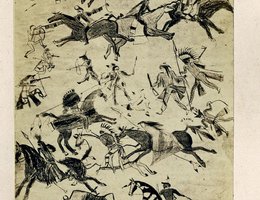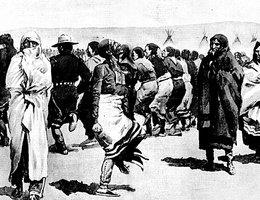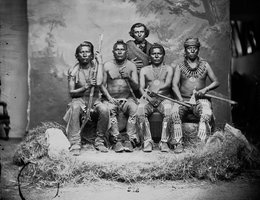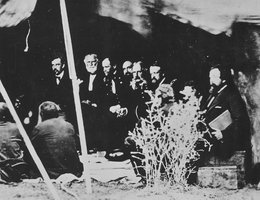
There were many Native American tribes living on the Great Plains, competing for scarce resources. Of course, the various tribes came into conflict with each other.


Sometimes the wives of a few of the men accompanied a large war party to help care for their clothing and to do the cooking. A sacred War Pack, kept in the Tent of War, was important in any war activities. The contents of the pack were believed to protect the tribe from harm. A returning war party with the scalp of an enemy held a special scalp or victory dance. Men who won special honors on the warpath were permitted to wear an eagle feather in their scalp locks. Certain warriors might also wear a deer-tail headdress. Only important men wore the large feathered headdress seen in movies and only on social occasions. Only the men wore feathers in their hair, but the women might wear them on their clothing.

The Lakota (Sioux) had much more trouble with early emigrants than other tribes. Their experience determined the history of homesteading. Trouble with whites began with the California gold rush. In 1850 approximately 50,000 gold seekers traveled the Overland Trail through the heart of Lakota country. The Lakota did not like these newcomers crossing their land, competing for resources. The government tried to get involved by peaceful means.

Unfortunately the peace did not last. In 1854 — eight years before the Homestead Act — some Lakota near Fort Laramie butchered an emigrant’s cow they thought was abandoned. Lt. John Grattan and 29 soldiers were sent to investigate. Grattan opened fire on the Indian camp. The Indians fought back, killing all of the soldiers.

For the immigrants, the threat they felt from Native Americans was probably greater than the actual history. There was conflict — theft, fights and murder on both sides. But there were also hundreds of treaty negotiations across the continent. These treaties lessened the conflict and, more importantly, transferred legal title for land that native tribal people had lived and hunted on for centuries to the U.S.